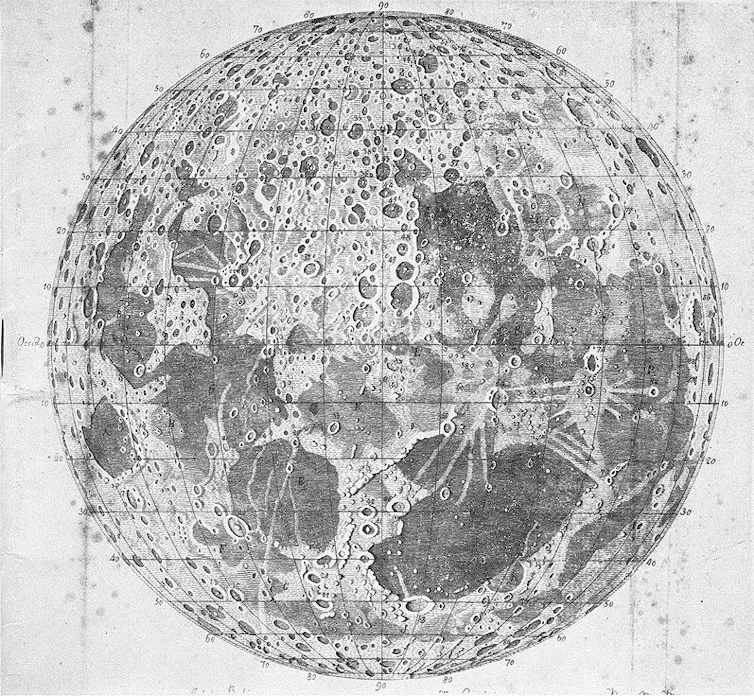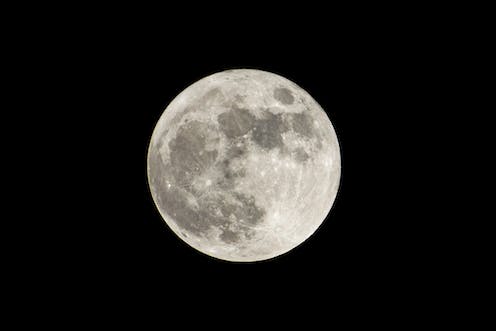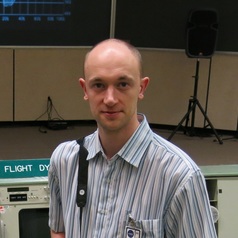Big Brother has always chosen its contestants for entertainment value rather than for intellectual debate. This was recently highlighted in a discussion started on the programme by dental therapist Chantelle, who suggested there must be more than one moon in the sky because it changes size and can be seen around the world.
Chantelle had trouble believing that the Moon can be seen in the UK and Australia at the same time, when it takes almost a whole day and night to fly between the countries. Some of the other housemates tried to dissuade her of this view, while others decided not to get involved in the discussion.
In fact, Australia and the UK are not on opposite sides of the world. Additionally, the Moon lies at an average of 384,400km away from us. At this distance, both locations on Earth would have an unobstructed view of it – see the image below.
So, it is quite possible for people in both countries to be seeing the same Moon simultaneously - depending on the time of year and position of the Moon. It may well be rising in the UK as it is setting in Australia.
But the UK and Australia (along with other locations on Earth) will have different views of the Moon at different times of the year. Indeed, even from the same location, it can be seen at different positions in the sky on different days. This is because the Earth is tilted on its axis by about 23 degrees, so the planet’s rotational North Pole does not stick directly up.
This means that the Moon – and the Sun – move across the sky in an arc as the Earth rotates. The height of this arc depends on your location on Earth’s surface, and where the Earth is in its orbit. It also depends on the season: for example, during winter, the Moon has a lower height arc.
Our view of the Moon is further affected by the fact that its elliptical orbit around the Earth is itself tilted by about five degrees from the horizontal (the white hashed line in the illustration below). The top three depictions of the Sun, Earth and Moon are how you would see a full, new and half Moon respectively.
In the case of a full Moon, where the Moon is behind the Earth, the sunlight hits the Moon and is reflected off to be observed from Earth.
During a new Moon, where our only natural satellite is between the Sun and the Earth, the light hits the Moon and is reflected back towards the Sun.
In a half Moon, where the Moon is off to the side, we see a partial reflection of sunlight from the lunar surface.
The Moon’s changing appearance
Let’s look a bit further into the claims by Big Brother’s Chantelle. The average flight time between London and Sydney is roughly 21 hours, including stops. The average passenger plane travels at just under 1,000km per hour. The Moon, on the other hand, travels at an average of 3,600km per hour (1km per second, or 0.62 miles per second).
However, speed isn’t the issue here, as the Moon is so far away that it can be seen easily by people at quite different locations on the Earth’s surface – such as the UK and Australia.
Chantelle also mentioned how the different apparent size of the Moon in the sky suggests there is more than one object. As a percentage of the sky it takes up, the Moon could be very small and near to us (which is what some Flat Earth models assume, or extremely large and very distant.
Changes in the apparent size can be explained by the orbit of the Moon around the Earth, which is not perfectly circular but elliptical (oval). This means that during certain points in its orbit the Moon will be closer to the Earth, and at other times slightly further away.
When you then combine the point at which our natural satellite is close to the Earth with a full Moon –- when the Sun is behind the Earth from our perspective and the Moon is in front – you get what’s known as a Supermoon. When this occurs, the Moon can appear to be about 14% larger than when it is at its furthest point from the Earth.
Accurately determining the size of the Moon only requires some basic orbital mechanics. You can work out the distance to the Moon by measuring the time it takes to orbit Earth. From the distance, we can calculate the Moon’s radius.
We see the same face of the Moon all the time because it orbits around the Earth in exactly the same amount of time it takes to rotate once on its axis.
Why does one side of the Moon always face us?
Mini-moons
While there is only one Moon, there are of course millions of objects orbiting the Earth. These include anthropogenic material including rockets, satellites and space junk, as well as smaller pieces of rock.
But very occasionally, the Earth’s gravity temporarily captures small natural space rocks. These are sometimes referred to as mini-moons. Unfortunately, while the term “planet” has a clear definition, there is no strict definition of a moon. We can either say that there is one moon around Earth, or more than 160 million moons.
But an easy way to confirm that our Moon is the same moon (with the same face) is to take images or draw the lunar surface in the evenings. This has been performed throughout history, and you could compare any photos you take or sketches to a map of the Moon, identifying the dark “mare” patches to an image like the one below.

A map of the Moon by the 18th Century German astronomer Tobias Mayer. Public domain



 SpaceX Starship Explodes in Texas During Test, Citing Nitrogen Tank Failure
SpaceX Starship Explodes in Texas During Test, Citing Nitrogen Tank Failure  Tabletop particle accelerator could transform medicine and materials science
Tabletop particle accelerator could transform medicine and materials science  Cogent Biosciences Soars 120% on Breakthrough Phase 3 Results for Bezuclastinib in GIST Treatment
Cogent Biosciences Soars 120% on Breakthrough Phase 3 Results for Bezuclastinib in GIST Treatment  FDA Pilot Program Eases Rules for Nicotine Pouch Makers
FDA Pilot Program Eases Rules for Nicotine Pouch Makers  Lab-grown meat: you may find it icky, but it could drive forward medical research
Lab-grown meat: you may find it icky, but it could drive forward medical research  NASA Cuts Boeing Starliner Missions as SpaceX Pulls Ahead
NASA Cuts Boeing Starliner Missions as SpaceX Pulls Ahead  SpaceX’s Starship Completes 11th Test Flight, Paving Way for Moon and Mars Missions
SpaceX’s Starship Completes 11th Test Flight, Paving Way for Moon and Mars Missions  Eli Lilly’s Inluriyo Gains FDA Approval for Advanced Breast Cancer Treatment
Eli Lilly’s Inluriyo Gains FDA Approval for Advanced Breast Cancer Treatment  Kennedy Sets September Deadline to Uncover Autism Causes Amid Controversy
Kennedy Sets September Deadline to Uncover Autism Causes Amid Controversy  Neuralink Expands Brain Implant Trials with 12 Global Patients
Neuralink Expands Brain Implant Trials with 12 Global Patients  Ancient Mars may have had a carbon cycle − a new study suggests the red planet may have once been warmer, wetter and more favorable for life
Ancient Mars may have had a carbon cycle − a new study suggests the red planet may have once been warmer, wetter and more favorable for life 
































